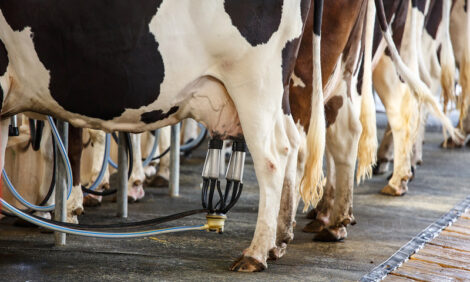



Parasitic wasps may help dairy operations
US - Researchers in three states looking at ways to battle flies in dairy farms have turned to a parasitic wasp for help.“The parasitic wasp searches fly breeding areas for fly pupae. Once found, the adult female wasp drills a hole through the fly pupae’s protective casing and lays an egg on the fly pupa,” Willard said. “The parasite egg hatches and the immature wasp eats and kills the developing fly pupa.”
Willard said each female wasp will kill about 100 fly young in their lifetime. Research is focusing on the best procedure for releasing these wasps to control a fly population.
Flies are an ongoing problem in dairy operations as they are attracted to cows’ eyes, teats and open wounds. Many flies carry disease, and even those that do not still disturb the cows.
“Extreme discomfort caused by constant fly attack can result in reduced weight gain and lower milk yield by as much as 40 percent to 60 percent,” Willard said. “Calf growth can be reduced as much as 13 percent by the fly attacks.”
Willard said flies can never completely be eliminated, but they can be controlled.
“The first step is to assess where potential fly breeding areas may be present on the farm, such as accumulated manure and run-off areas,” Willard said. “The next step is to implement control measures such as more thorough cleaning of the cattle’s living area and the use of fly strips or parasitic wasps that target fly populations.”
This Mississippi Agricultural and Forestry Experiment Station research is being done in collaboration with the University of North Carolina and the University of Arkansas. Kelly Loftin, livestock entomologist with the University of Arkansas Cooperative Extension Service, said the wasps are parasitoids rather than parasites because they kill their host before it has a chance to reproduce.
“A parasite usually takes only enough host nutrients to survive and reproduce, and normally does not kill the host,” Loftin said.
He said the wasps are tiny and pose no threat to humans, pets, livestock or other farm animals. The wasps only affect houseflies, stable flies and other flies that develop in manure or decaying organic matter.
Loftin said several Arkansas dairy farms are using these pteromalid wasps in an integrated pest management system to manage flies.
“Producers should consistently monitor fly populations, conserve natural enemies and augment the beneficial insect complex with pteromalid wasps when appropriate,” Loftin said. “They also should use insecticides that are compatible with natural enemies and most importantly, practice good sanitation and waste management.”
He said parasitoid wasps should be part of the wasp management program, but producers should continue to use other appropriate means of fly control. Only limited conventional spray insecticides are labeled for use around dairy facilities. At dairies producing organic milk, nearly all conventional insecticides are banned, so the use of natural enemies for fly control is even more important.
TheDairySite.com News Desk


